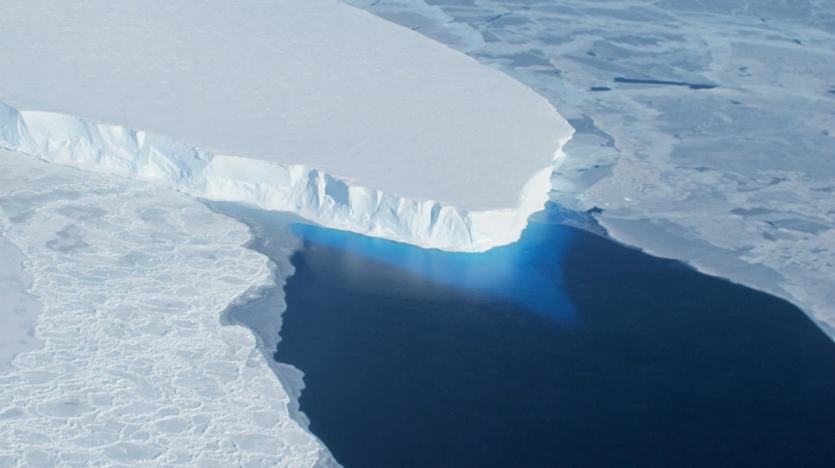Channels of warm ocean water melting the ice from below threaten the stability of Thwaites glacier in western Antarctica. Photo:AFP/Getty
Glacier the size of Great Britain under threat of separating from Antarctica
By Patryk Krych | The World Daily | SEPTEMBER 11th 2020
The Thwaites glacier in the West Antarctic, nicknamed the ‘Doomsday Glacier’, has been marked by scientists as a possible global threat, as warmer channels of oceanic waters are heating it from underneath. This may lead to the country-sized glacier’s eventual separation.
The scientific findings, recently published in The Cryosphere journal, reveal the ocean floor beneath the glacier is much deeper than anyone had previously thought it would be. There are an especially high number of channel lines leading to the meeting point of the ice, and the ocean bed. The primary fear is that the glacier, noted to be the size of Great Britain, will separate from the rest of the ice shelf in turn leading to a major worldwide rising of sea levels.
Scientists say that the Thwaites glacier is extremely sensitive to climate damage, and that it has been melting for a long while now, accounting for about 4% of global sea rise levels. Over the past three decades, its loss of ice mass has increased fivefold.
Cavities, comparable to tooth decay, have been mapped by the scientists in the report all across the glacier, the size of the Grand Canyon. These cavities, the scientists fear, are allowing warmer water from underground channels to enter the glacier and exacerbate the melting process, and the global sea level rising as a direct result.
“And because they are so deep, and so wide - this allows a lot more water to get at, and melt, Thwaites' floating front as well as its ice that rests on the seabed,” said Dr Kelly Hogan from the British Antarctic Survey (BAS).
It was the BAS, along with a United States team that had traced the glacier’s seabed terrain, as well as much of the ice shelf’s very bottom levels in order to measure the gaps present. These gaps had appeared in areas that were previously grounded ice. This study was accomplished using aircraft, ship, and a robot submarine.
What they’d found was two particular cavities, about 800 metres deep, going about 10km across (six miles), a perfect passageway for warm water to invade and contribute to the glacier’s melting. While these two cavities were around 10,000 years old, the scientists found evidence of expansion, as well as relatively new fissures within the ice that had appeared somewhere in the last 30 years.






